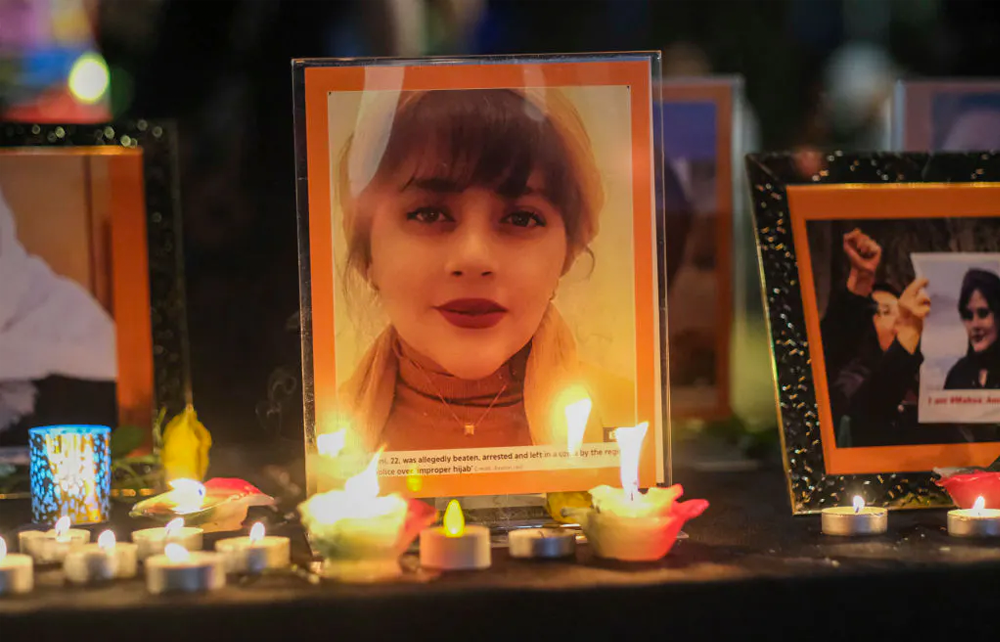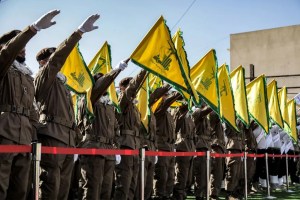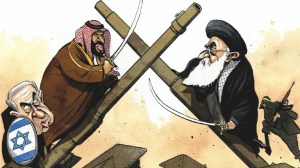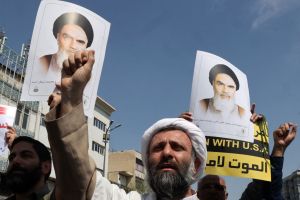George Floyd was a forty-six-year-old petty criminal from Minneapolis who died on May 25, 2020 after a police officer knelt on his neck while arresting him. The protests at the brutal manner of his death began the next day and by early June an estimated half a million people demonstrated in his name across the US. The protests went global: from Beirut to Gothenburg to Sydney where, on June 2, around 3,000 people gathered in memory of Floyd.
The next day in London an even bigger crowd demonstrated, one of many protests held throughout the UK that month. Police officers, soccer players and Keir Starmer, the leader of the Labour Party, “took the knee,” the gesture adopted by the Black Lives Matter movement to remember how Floyd died.
Two weeks ago in Tehran a twenty-two-year-old Iranian called Mahsa Amini also died at the hands of the police. She had come to the capital on a shopping trip but was arrested by the morality police on a charge of improperly wearing her hijab. According to reports, Amini died after being beaten with batons and having her head smashed against a police van.
The response to her death in the West has been muted. There have been small demonstrations of a few hundred people in America and Europe but the protesters were mainly exiled Iranians.
The truth is that the West isn’t much interested in Amini and the other young Iranians — more than seventy-five — who have been killed in the last two weeks. Its politicians are eyeing up Iranian oil — Emmanuel Macron last week shook hands with President Ebrahim Raisi in New York — and the country’s foreign minister Nasser Kanani said recently “given Europe’s energy supply problems triggered by the Ukraine crisis, Iran could provide Europe’s energy needs.”
France did get round to condemning the death of Amini this week, but the official statement was as tepid as that of other western governments and the word “headscarf” was not mentioned.
The people are similarly disinterested. Their pressing concern is the climate; last Friday 25,000 young demonstrators marched through Berlin and Rome to demand reparations for those worst affected by global warming.
If Amini had been a Palestinian it might have been different. Palestine is always a pull for westerners with a social conscience. Last year in London over 180,000 Britons gathered to demonstrate their “solidarity” with Palestine.
Essentially, the West’s social justice warriors are confused about how to respond to the deaths of their young Iranian counterparts. For years they have been conditioned by clever Islamic activists and compliant political leaders to regard the headscarf as empowering.
In an article this week the French newspaper, Liberation, analyzed the protest movement’s slogan, “Woman, Life, Freedom,” without once mentioning “headscarf.” It’s an awkward word for the West, made all the more ambiguous by the virtue-signaling of politicians, who will say anything to try and convince the people that multiculturalism is nothing other than an unalloyed success.
In April this year, Macron congratulated a young woman for wearing a headscarf during a walkabout in Strasbourg. In 2017 the then-British prime minister, Theresa May, championed “World Hijab Day” and declared that “what a woman wears is a woman’s choice”; in the same year the Swedish trade minister, Ann Linde, wore a headscarf on an official trip to Iran.
Neither May nor Macron has made any public comment on the choice of Iranian women not to wear the headscarf. Keir Starmer made no mention of Mahsa Amini during the Labour Party conference.
The most vociferous opponents in the West of the headscarf are Muslim women. In 2019 scores of distinguished French Muslims signed an open letter that was published in Le Monde, stating that the “wearing of the headscarf is the ostentatious sign of a retrogressive, obscurantist and sexist understanding of the Qur’an.” They urged their compatriots to “support the French men and women of Muslim faith who are fighting against this terrible neoconservative wave.”
This view has been reaffirmed in the wake of events in Iran. Jeannette Bougrab, who served as a junior minister under Nicolas Sarkozy, remarked last week: “There is no mistaking the meaning of the headscarf. It is neither a social phenomenon nor an artifact of fashion. It serves a deliberate gender policy that aims to enslave the female mind and body.”
Bougrab said she feels “nauseated” when she sees western brands using headscarves to promote their products. She didn’t name the brands but presumably she had in mind Nike, H&M, Benetton and the French sportswear company, Decathlon, which in 2019 caused controversy by launching a range of headscarf apparel.
The headscarf is also, according to the former Dutch MP turned human rights activist Ayaan Hirsi Ali, “a symbol [that] justifies the rape of women who refuse to wear it. It is time to discard it like the chastity belt.”
It is unfortunate timing that as young women in Iran risk their lives by burning their headscarves, the garment was once more being promoted in the West, and again under the auspices of the European Commission. They ran an advert for the 2022 European Innovative Teaching Award, promoting the event with a series of photos, one of which showed a young girl wearing a headscarf. It was quietly removed this week.
Last November the Council of Europe — which receives funding from the Commission — was forced to pull an anti-discrimination advert that also promoted the hijab: “Beauty is in diversity as freedom is in hijab” was the campaign’s slogan. One French MP, Sarah El Haïry, said she was “deeply shocked” by the advert.
Why do political leaders in the West ignore the warnings from its many moderates Muslims about the true significance of the headscarf, which Iranian dissident Masih Alinejad this week described from New York as “a tool to control women?” For the same reason they are indifferent to the suffering of those brave young women in Iran. Because they are cowards. It is easier to take a knee than it is to support taking off a headscarf.
This article was originally published on The Spectator’s UK website.


















